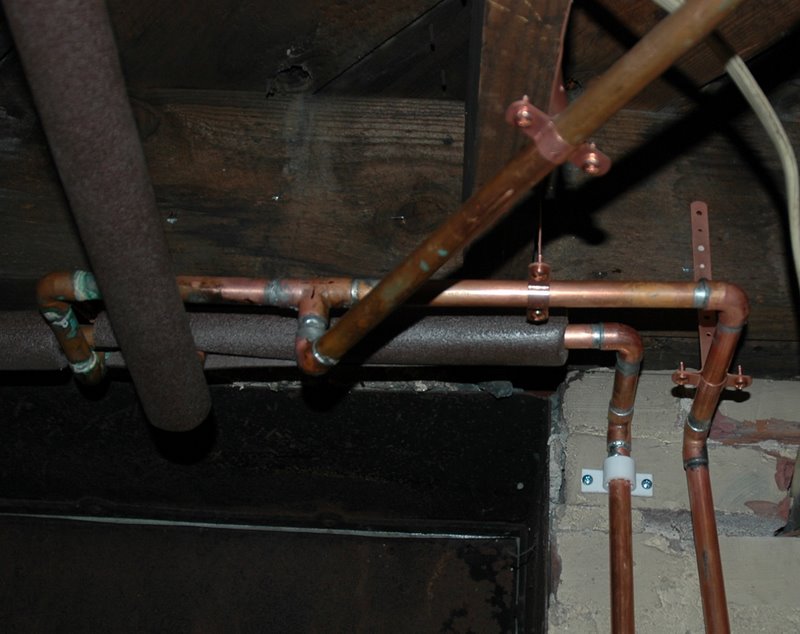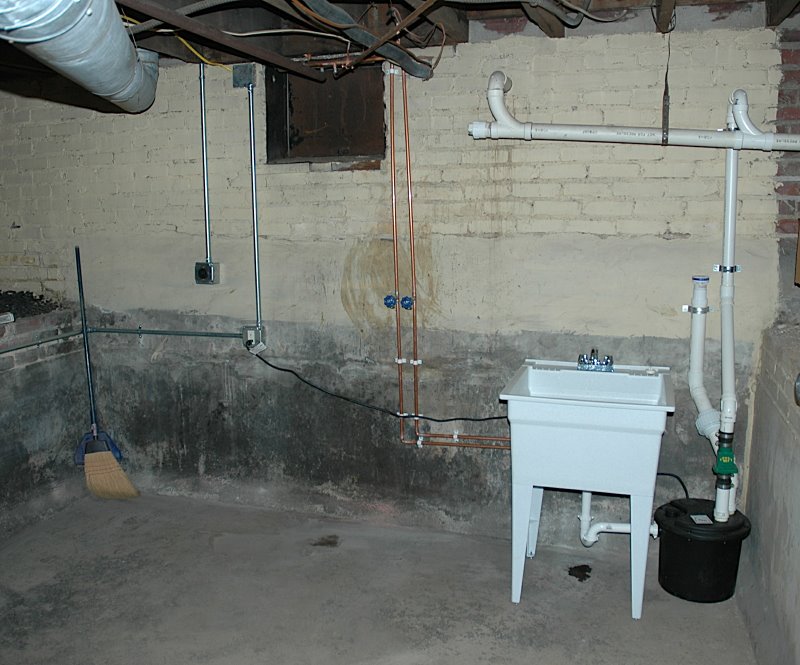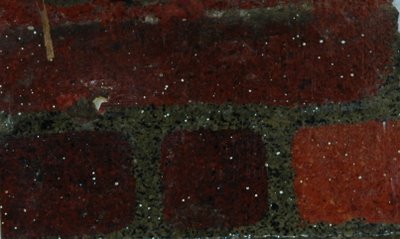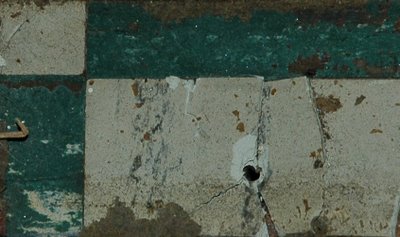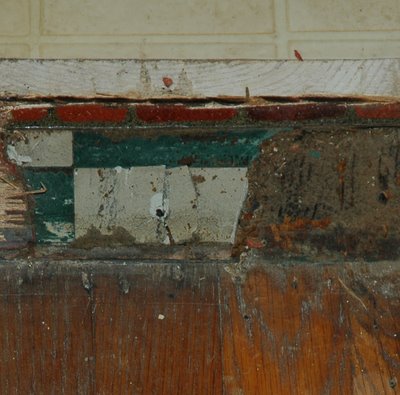Tori asked me some home inspection questions so I figure I’ll just write a long ass blog about what I
look for, and maybe it will be a benefit others as well..
I should preface this all with the fact that I am not a home inspector, and this is a
general overview that skims the surface of what I look for..
Electrical
When you look
at a house never assume that if it has 3 prong plugs that it’s been rewired.. I lived in a place in Raleigh that had 3 prong outlets in place but the 3rd
prong wasn’t actually connected.. When buying an older house chances are work was done at different times so some parts may be re-wired/upgraded and
others may not be.. My current house shows signs of at least 4 different electrical “upgrades”..
Service Panel /
Entrance
First I would look at the breaker/fuse system first.. It should be close to the power meter..
You want to see a breaker
panel and not fuses.. A breaker panel is the electrical box with switches.. I put some photos on the right of what you may have.. You want a large
breaker panel.. 200 Amp is what most houses have these days it will have I believe 40 openings for breakers.. You can have a smaller breaker panel say 125
Amps or so from the 50 or 60s.. It will have 20 openings or so.. There is nothing wrong with a 125 amp panel, but it may not meet future electrical needs,
so you would want to replace it one day.. To upgrade a 125 amp panel to 200 amps would probably be around 1000-1500 bucks.. It is no rush though unless
you are popping breakers all the time and the panel is out of space.. If you are not sure of the size, it is indicated usually on the inside door
somewhere..
You may have fuses in your panel if it is an older house.. They can look like the photo to the right, or they can be little glass
fuses with screw threads like a light bulb.. These have to be replaced.. Most insurance companies will not insure a house with fuses and will want you to
upgrade to a breaker panel..
You can also have what are called sub-panels.. These are smaller panels like your main panel in remote locations..
There is nothing wrong with these, but they too will need to have breakers (switches) not fuses.. You might find a sub-panel in a garage, or in an
upstairs section when it made more sense to have 2 panels instead of one to save on wire.. Sometimes they will also put a sub panel next to a main panel
if the main one is out of room..
Outlets
As far as testing the outlets you can get an electrical outlet tester at home depot or lowes for 7-8 bucks.. If you are getting a
home inspector to look at the house (which you always should) he will have one.. Make sure he/she uses it in every outlet.. It will tell you if it is
properly grounded (3rd prong), or mis-wired in a few very common ways..
If you have 2 prong outlets in the house you will want to eventually swap
them out for 3 prong grounded outlets which will require you to re-wire that circuit.. I am not sure how much that costs, but you will probably have a
bunch more outlets like that and it will probably also be bundled in with a panel upgrade so you are looking at maybe 3-10k depending on how big the job
is..
Overall
If you have a 200 amp panel in a house, and all of the outlets are 3 prong and test properly chances are the
electrical system is in A-OK shape.. Anything else could be an expensive repair/upgrade.. It’s just a cost of purchasing a home so just be aware of it
and factor it into your budget when negotiating a purchase price.. |
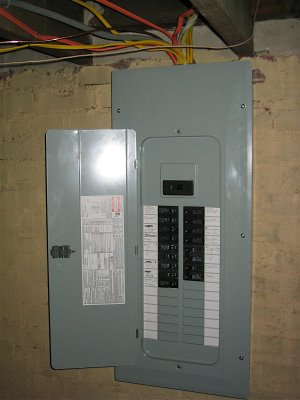
200 Amp Breaker Panel – What you want
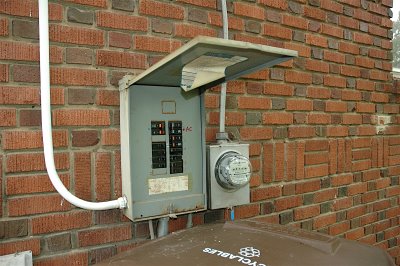
125 Amp Breaker Panel – Not what you want but
OK
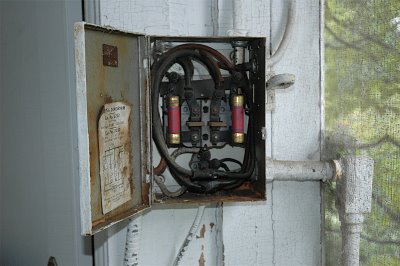
Fuse Box – Not What you
want
|
Plumbing / Sewer
You have 2 sets of pipes in your house.. The feed
pipes that your water comes in (1-2 inch pipe) and the sewer line (4-10 inches) that waste returns to the system.. Keep in mind if there is natural gas
in the home you will also have gas piping.. If in doubt trace the pipes from the gas meter and figure out what is what.. Sometimes they will put stickers
on gas pipes to say “gas” but don’t count on it..
Feed Pipes
If the house was built in the 70s-80s you should look for
polybutelene plumbing.. it is a grey plastic pipe that is no longer used.. There was a series of class action law suits over it, and it should be
replaced.. The problem with it is that it springs leaks very easily.. It was one of those new “perfect solutions” that turned out to be a dud.. The pipe
breaks down with certain nutrients they think in the water, and NC isn’t nearly as bad as some states like Texas.. Either way google it and you will know
what it looks like.. It WILL cause problems, and you will want it to be replaced, and it will also be a liability for you when re-selling it..
You
want your water feed pipes you want to have copper, cpvc, or pex.. We all know what copper pipes look like.. It’s probably the best thing you can have,
but it’s also the most expensive.. CVPC and pex are types of plastic pipes.. They are typically white or off-white.. If you see these you are probably in
good shape..
What you don’t want to see are galvanized pipes.. They are going to be silverish dull metal pipes.. I am not sure when they stopped
using them, but they will rust, and eventually break due to the internal rusting.. They will need to be replaced.. This will be the typical piping of an
older house (My guess is 40s and earlier).. As the pipes rust they will constrict like cholesterol in your veins, and reduce the water pressure.. In the
photo you can see one galvanized pipe connected to copper..
Water Feed from the City
You will also want to find the connection
to the city water supply.. This is the pipe buried in the ground from the water meter to the house.. In my house they re-did the piping inside the house
but left the connection to the city as an old galvanized pipe, and I need to get it replaced.. It’s going to run me around 2500 bucks, so it’s not a cheap
thing.. Even though the rest of my house was re-plumbed the pressure still sucks cause of that feed from the city.. You can also have a polybultelene
water feed.. Typically these feeds are blue.. Not something you want to have.. The best material for the feed from the city is copper, but it’s also the
most expensive..
Sewer
Most forms of the sewage pipes are OK.. Old house will have cast iron pipes.. They will probably
outlast the house, nuclear holocaust, etc, nothing to worry about.. You can also see PVC pipes these are fine as well.. I wouldn’t worry much with these
as long you don’t see anything really questionable.. Maybe duct tape being used to patch a pipe or something really strange.. |
valign=top>
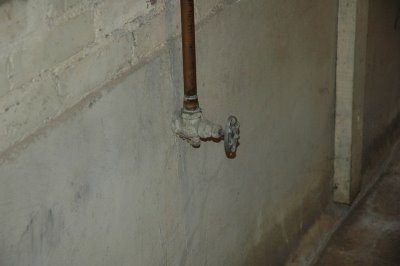 Galvanized Feed connected to Galvanized Feed connected to
Copper |
Structural Things
Cracks above doors and windows are normal in houses.. This happens when a house
settles and there is little you can do about them.. Don’t worry about these..
Foundation
Look at the outside foundation
and see if it bows, or isn’t straight.. That is a concern.. Look to see if you have any cracks in the brickwork, as these may be indicators of structural
problems..
Other
Look for major sloping in floors.. Some dips are expected in an older house, but you don’t want to be
able to put a marble floor and have it racing for the wall instantly..
Outdoor Stuff
Be leery of houses covered with vinyl..
Especially new vinyl jobs.. I would make the assumption that something rotting has been covered over..
Check the lot to look for puddles of
water, see if there are any water runoff issues..
HVAC
I’d look at the age of the HVAC (Heating, Ventilation, Air Conditioning) and
know that it’s going to be expensive to get replaced (5000 bucks or so) when it’s dead.. So just be aware of it’s age..
General
Call
home inspectors and get references.. Ask to be present when they are doing the inspection.. Ask them questions about what they are doing and why.. You are
spending 300 bucks or more get your moneys worth! I have let my agents choose my home inspectors with both houses I have bought and I feel like that was
a mistake..
Look at angieslist.org and see if you can find reviews of home inspectors.. They also must be registered with the state, so lookup
their license on the website and make sure they are still licensed..
Sign up for angies list.. it’s a free site that lets homeowners post reviews
of contractors.. it’s quite useful..
Non-Home Inspection Suggestions
Title Insurance – Environmental
Rider
When you get title insurance (you should always get it), get the “environmental rider”.. I don’t really like insurance, but
typically it will be a one time cost of less than $100 bucks and protects you from any environmental cleanup that could be required on your property..
The last thing you want to find out is a leaking oil tank on the property from the old heating system, and you have contaminated your yard and the 8
houses around yours.. The EPA could require you to cleanup all of it at the cost of 100s of thousands of dollars.. Even if the risk is low, it’s an
insurance that is worth having..
Home Warranties – Shove them up your agents ass
I wouldn’t get one unless they give it to
you for free.. Hell I might even ask for the money in lieu of a home warranty.. Here are the many reasons I am against home
warranties:
- They don’t cover most expensive things if you read the fine print.. HVAC covered up to 2000 bucks if problem not caused by
rust, so that “when the ac breaks you can get it replaced for free” line i’ve heard from so many agents is total shit..
- The agents get an
additional commission on selling them
- You don’t get to choose the repair person making the repair the home warranty company does
- You have to
call someone else to dispatch a repair person to your house
- They don’t cover existing problems
- Most have clauses that require you to have
“maintained it properly” so who knows what the hell that means but sounds like a good way to get out of paying for any repairs they don’t wan
to..
Just take the risk and don’t get it.. Houses require repairs, and sometimes they aren’t cheap.. I feel like home warranties are a
scam to be coupled with loans for under qualified buyers making them think they don’t have to worry about repairs pushing them over their budget and into
foreclosure..
